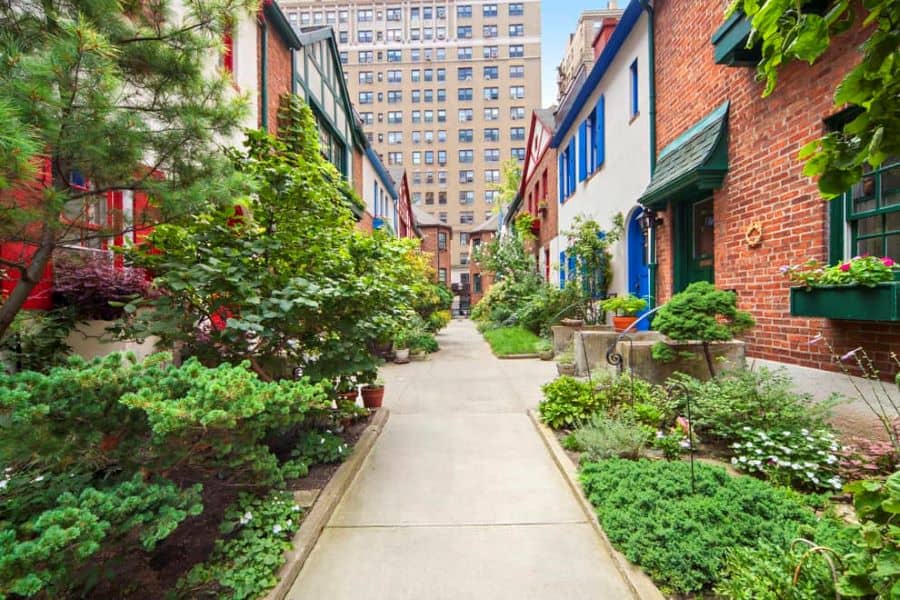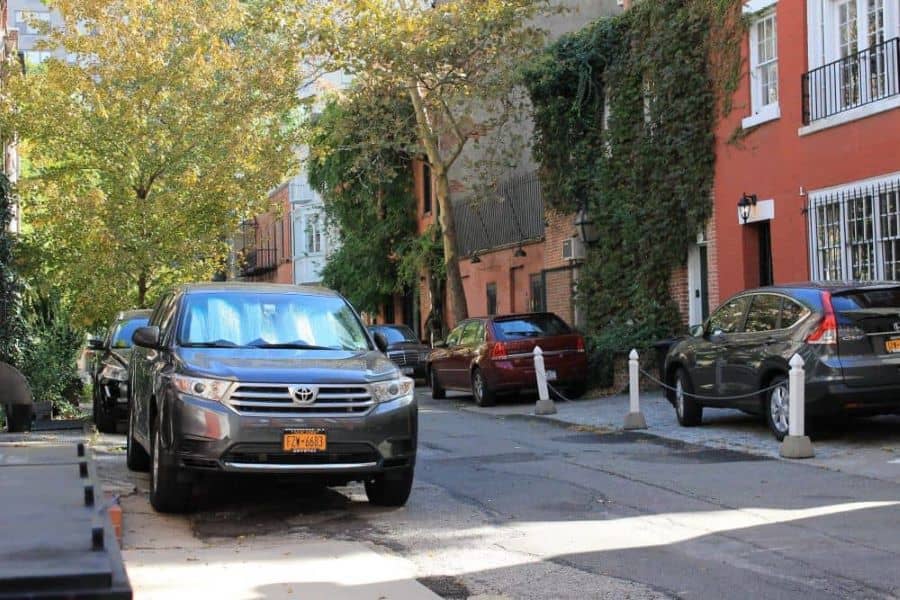What are the Mews in NYC?
New York City has many historical gems that are hidden in plain sight, and none are as cool as the mews in NYC. For those who are unaware, mews were rows of stable houses that boarded horses and other livestock in the early 19th century. As the city changed, and horses were used less, most of the mews were demolished to make way for newer construction and grid systems that would benefit the almighty automobile. That said, some mews still remain intact and have been converted into many different things. But where are these hidden mews? And why do they get to remain?
Where are the Mews in NYC?
The Washington Mews

Perhaps the most famous mew in the city, The Washington Mews can be found one block north of Washington Square Park between 5th and 6th Avenue. They were once used as private stables for the wealthy homeowners of the area. But once travel by horse became a rare thing in the early 1900s, the stables were turned into artist studios. The studios were purchased by New York University in 1950 and converted into housing for students, faculty, and staff, which is what their status is today. You likely won’t be able to live on this street unless you meet those criteria, but you can always walk down it for a look through time.
Grace Court Alley

Located in the neighborhood of Brooklyn Heights, this street was originally used as stables for the Remsen family, and was named after Grace Church when the family lost ownership of the land. The church and several rich Brooklynites still used the stables, though, which is partly why they’ve survived as long as they have. Eventually, when cars became the main mode of transportation, the stables were converted into chauffeur’s quarters. They were then turned into apartments, but their historic charm never changed, keeping the tall wooden stable doors and window frames intact along with the rest of the façade.
Pomander Walk

One of the larger “mews” still intact, Pomander Walk is a bright and colorful street in the Upper West Side between Broadway and West End Avenue. Today, there are 4 buildings that face West 94th Street and another seven buildings that face West 95th Street. The streets were never actually used as horse stables, so most scholars don’t consider the street a true mews. However, the houses are old and seemingly out of a fairy tail, so people don’t really know what else to call them. The homes are named for an old play that premiered in 1910, the setting of which matches the aesthetic of the street perfectly.
Charles Lane

Charles Lane, in West Village, is one of the only mews that has not been converted into something else. Formerly used by the Newgate State Prison for keeping livestock, the street where the mew was located was later refurbished with cobblestone when said prison closed. Historians don’t know why these stones were used specifically for the refurbishing of this particular street, but they still remain there today despite it being an empty street. The lane is surrounded by expensive housing, but those beautiful stones still remain, as does the haunting history of the road.
Sylvan Place

Sylvan Place is a row of 20, three-story homes that lead directly up to the Morris-Jumel Mansion in Washington Heights. Formerly stables for the mansion, as well as several other mansions in the area during the 1880s, the cobblestone in this road has never been restored, but the stables have been. They were converted into housing in 1882 when the Morris-Jumel Mansion sold off the land, and restored again in the 1980s once the area was labeled as a historic district. The homes, the color scheme, and the street are all a blast from the past. Come to Washington and be transported back to the past.
MacDougal Alley

Once part of The Washington Mews way back when, this alley is also just a block north of Washington Square Park. It follows much of the history of The Washington Mews, starting as horse stables, converted to art studios, then transformed into housing. However, this half block is not owned by NYU, which means finding a home here would, theoretically, be a lot easier. That said, these historic homes are exclusive and beautiful, so you will be spending a pretty penny to live in one. The residents who live there say that it’s absolutely worth it.
Patchin Place

Another small street in Greenwich Village, these houses, sadly, don’t quite have that original stable house charm anymore. Instead, the stable houses were converted into row houses in 1848, and were very popular with writers and artists in the 1900’s. They became part of the Greenwich Village Historic District in 1982, and housed famous residents like Marlon Brando, Charles Platt, and E. E. Cummings. While the stables houses themselves might be gone, their bones are intertwined in the buildings that currently stand there. The history is still very much alive, even if the stables aren’t.
Love Lane

Called one of the most romantic streets in Brooklyn, Love Lane was a mews that was very popular in the early days of the borough. One wouldn’t think a row of horse staples would be a hot date spot, but lovers would often take romantic walks down the lane on nice summer nights. Several stable houses in these mews have been demolished, but the majority of them remain, converted to housing in the early 20th century. The lane’s love origins linger, though the street is not as popular with couples seeking a bit more excitement. However, for those seeking a more romantic walk, it’s still the perfect street, with a gorgeous aesthetic that will send you back in time.
Much of New York is dedicated to newer, taller, more luxurious buildings, but many neighborhoods are determined to preserve the city’s older charms. Mews are in high demand right now, and people who live in them love the more quiet, suburban feel of their streets. Even if you don’t want to own one of these historic homes, you should check out the neighborhoods they reside in. They are beautifully preserved, and will give you a glimpse of what life was like back before the age of industry.
Russell is a writer and comic based in New York City. His plays have been featured at Penn State’s Cultural Conversation’s Festival, The NYC Thespis Festival, and Imaginarium’s Inaugural Theater Festival. Follow him on TikTok and Instagram @pooleparty528



